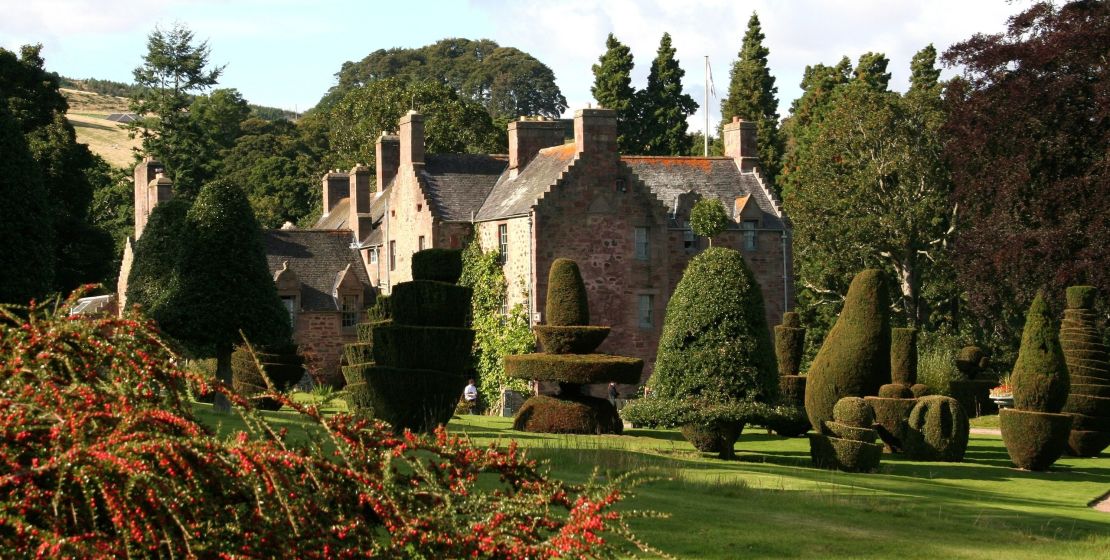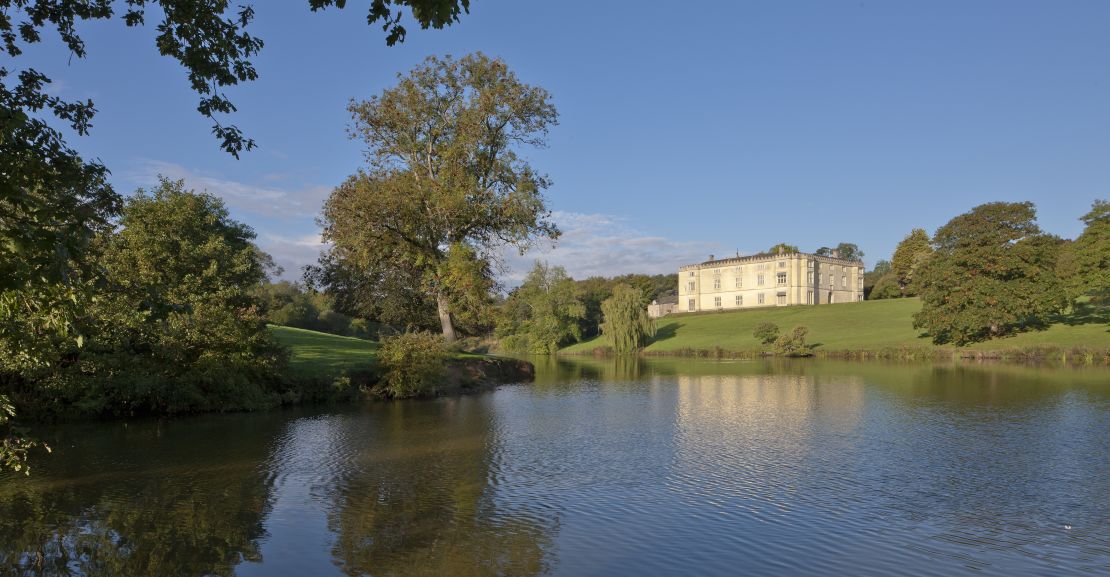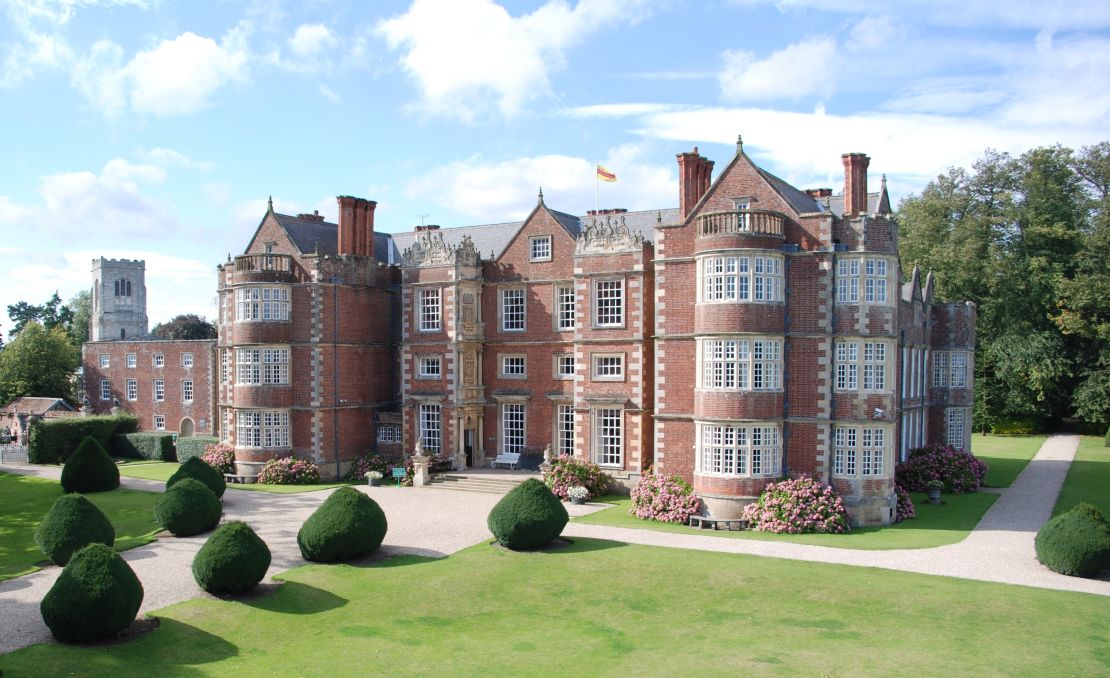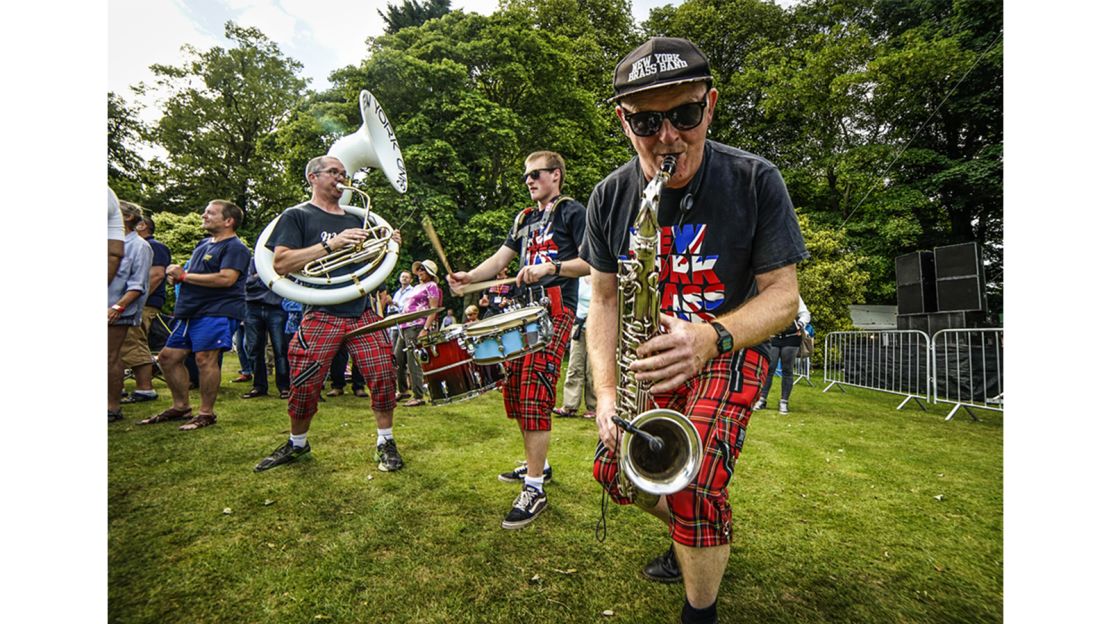Story highlights
Nearly half of Britain's stately homes were demolished because their owners couldn't afford to keep them
Stately homes cost a princely sum to run.
Owners find inventive ways -- tours, music festivals, farm shops, weddings and pheasant shoots -- to maintain and restore their historic homes.
Imagine if your home had turrets, a ballroom, or a maze in the garden. Some people’s homes have all those things. But while life in a palace – or a castle – might sound like a fairytale existence, it costs a princely sum of money to run a stately home.
Heating, keeping the roof in good repair and mowing the lawns all drain the coffers, and those lucky enough to inherit a country pile have to find ways to finance them.
Most of the UK’s stately homes were built in the 17th and 18th centuries as manor houses at the heart of an agricultural estate, explains Ben Cowell, director general of the Historic Houses Association, which helps owners of 1,650 houses, castles and gardens throughout the UK to conserve them.
“Owners made money from renting land to tenant farmers,” says Cowell, “but many also invested in industry, mining, or railways, which helped to replenish the family fortune and fund a country house way of life.”
The large estates provided employment for hundreds of people and supported providers of food, fuel and services. But, over the past two centuries, thousands of country houses have been torn down. “There were almost 5,000 mansions at their mid 19th century peak, but that number has almost halved – only about 3,000 remain today.”
“The decline started in the late 19th century,” says Cowell. An agricultural depression reduced farming rents, and politicians turned against landlords – death duties on landed wealth were introduced in 1894, followed by other legislation that further turned the screws on the landed classes.
Unable to pay their tax bills, owners were forced to sell off parts of their estates. “Once the land was lost, the house itself became less and less viable,” says Cowell.
A wave of destruction began in the early 1900s but, says Cowell, most people weren’t upset at the losses, because the houses symbolized an old order. Demolition peaked in the 1950s. “Country houses were requisitioned by the military during the second world war, and frequently damaged,” says Cowell. “When the keys were handed back, the families had lost the wherewithal to repair them. With no legal protection in place, the houses were just pulled down.”
This was also a period of intense suburbanization in the UK. “Some houses were buried beneath new housing estates, motorways and golf courses as cities expanded and encroached on the surrounding countryside.”
England's lost country houses
Salvation came in 1976 in the form of the Finance Act – legislation that allowed owners to seek exemption from inheritance tax in return for a commitment to keep their houses open to the public and in good order. “Many hundreds of houses were saved as a consequence,” says Cowell.
The owners of those which survived, however, had to adapt. “Most owners are ordinary people who have an extraordinary responsibility – which is to take care of a historic house,” says Cowell.
There’s huge diversity in how they go about that. CNN profiles three families who are maintaining their splendid residences in inventive ways.
The Threiplands of Fingask Castle
The Threiplands of Fingask Castle
“There was a time when nobody ever came up the drive, and now they come all the time,” says Helen Threipland.
Helen, along with her husband Andrew Threipland, and their three teenage children, lives in a 16th century castle perched on a hill in Perthshire, Scotland. With the occasional break during turbulent times, Fingask Castle has been occupied by the Threipland family for 400 years.
To fund the castle’s upkeep, it acts as both family home and family business, encompassing holiday lets and weddings – the main sources of income – and a theatrical show. On welcoming strangers into her home, Helen says: “One just has to embrace it. If you didn’t, you’d go completely mad.”
In 1996, the couple launched The Fingask Follies, a musical revue that takes place annually. “It’s a return to Andrew’s ancestors’ tradition of drawing room entertainment,” says Helen, “but we do it in a modern way that’s funny and clever.”

This year, the theme is Battles Great & Small, “to tie in with the centenary of peace in Europe after World War One.” Helen and Andrew dream up the themes, audition performers, commission writers, direct the shows and organize tours of big houses and small theaters around the country. “It’s not a great money-making exercise, but it’s very good advertising – it raises awareness of the Fingask Castle brand.”
Then in 2003, the Threiplands commissioned a pair of Russian painters to create a subscription mural on the wall at the top of main staircase. Subscription murals – large paintings that people pay to be depicted in – were once a popular way for artists to raise funds (the best-known example is Rembrandt’s “The Night Watch”) but, as far the Threiplands know, this is the only one currently active in the UK.

For up to £3,000 ($4,260) fans of the Fingask Follies, and people who are involved in the production, have their portraits added to the painting of the castle’s garden. Some choose to commission portraits of their children and dogs. “One of our friends decided to add his vintage Bentley.”
The castle’s major expenses include heating and gardening. Its collection of topiary trees, which form domes, swirls, spirals, and wedding cake-style layers, require regular trimming to maintain their shapes. Potholes on the castle’s mile-long drive appear on a regular basis and need to be filled. “People tell us we should tarmac the drive, but this is a family home and it wouldn’t feel right.”
The Fulfords of Great Fulford
The Fulfords of Great Fulford
Francis Fulford’s forebears have lived at Great Fulford estate for over 800 years. Fifteen years ago Fulford, and his fabulous house, became the unlikely stars of a reality TV show.
Located in Devon, in the west of England, the Tudor (16th century) manor house has about 20,000 square feet (2,000 square meters) of floor space but Fulford isn’t sure how many rooms there are. “That’s an irrelevant measure because anywhere else my Great Hall would be a decent sized home, and my Great Staircase would be a mini tower block,” he says.
Fulford says there are two ways to run a country house: “One is to work really hard. I’ve always had an aversion to that. The other strategy is to run a low-key operation, with minimal expenses.”
Fulford does not employ any permanent staff. “Staff eat money. If I need cooks or cleaners, I hire them. And I don’t mind sitting on my lawn mower – I find it quite therapeutic.”
Francis and his wife Kishanda, who have four grown up children, host weddings and pheasant shooting parties. Fulford says it’s “much more agreeable” to stay at Great Fulford than in a hotel. “After a leisurely breakfast you can go straight out to enjoy your day’s sport, rather than having to get into a car,” he says. And, unlike commercial premises, in which smoking has been banned, “you can still smoke your cigar after dinner.”

He’s happy to share his home with guests. “Big houses like mine weren’t built to be private homes, in which you’d occupy a corner. People built them to demonstrate power, and to entertain.”
In 2003, Fulford gained an unexpected revenue stream when a British TV crew offered him a “large sum of money” to make a documentary-style reality TV program about him and his family.
“We came across as loud-mouthed, appallingly politically incorrect people with ghastly language,” he tells CNN. Fulford’s prodigious swearing – encapsulated in the documentary’s title “The F***ing Fulfords” – created a hit for its makers and other TV opportunities followed. “I made a documentary called ‘Does America Suck?’ and another called ‘Why Britain’s F***ed.’ It was an adventure.”
Fulford says he needs around £20,000 ($27,600) a year to run the house, about half of which goes on buildings and contents insurance.
“With big houses, the key things are to keep the water out and make sure the electrics don’t catch fire. Whether the wallpaper’s peeling off isn’t important.”
He keeps heating bills to a minimum by lighting fires only in the rooms the family is using. “People tend to overheat their houses – it weakens the structure of the building, the furniture begins to fall apart and the books crumble. Old houses should be just a little damp.”
In 2013, a financial windfall allowed Fulford to fulfil a lifelong dream – the restoration of his ballroom. “I put in what I call a f*** off plaster ceiling,” he says.
The ballroom was created in the 1690s by Fulford’s ancestor, also called Francis Fulford. “He remodeled the Tudor Great Chamber and removed one floor to create a double height room.” Unfortunately, this caused the walls to shift slowly outwards and, 100 years later, the ceiling collapsed. The Fulfords abandoned that side of the house which became known as “The Ruin,” until they could afford to renovate it.
Fulford commissioned architectural plaster expert Geoffrey Preston to create the new ceiling, with a central panel depicting the marriage of Greek gods Bacchus and Ariadne. “It’s the biggest baroque plaster ceiling created this century, and it gives me real pleasure. I feel enormous pride in this fantastic room.”
The Cunliffe-Listers of Burton Agnes Hall
The Cunliffe-Listers of Burton Agnes Hall
In 1989, at the tender age of 12, Simon Cunliffe-Lister inherited Burton Agnes Hall – an enormous Elizabethan pile in East Yorkshire – from a distant cousin who died without a direct heir. The house was built around 1600, but Cunliffe-Lister’s ancestors have lived on the estate since the 12th century.
Cunliffe-Lister’s mother, Susan, stepped in to run the house and estate while he was growing up. Then in 2005 he and his wife Olivia – who have five children, aged from two to 11 – took over.
The house is extremely expensive to run, says Cunliffe-Lister. “Our fixed overheads – bills, insurance, and a skeleton team to maintain the property – amount to £250,000 ($345,000) a year.”
Opening the house to the public pulls in £185,000 ($255,290) in admissions fees, but doubles the running costs. “We employ a team of 50 people with 15 tour guides, four gardeners, four cleaners, and a house steward, plus three members of staff in the estate office, five shop staff and 12 working in the café. Then there’s myself, Olivia, and my mother – who does the work of two full-time gardeners.”

A music festival, held in the grounds, is gaining popularity and helping to boost the coffers. “I’m a keen saxophonist and piano player, so I was drawn to the idea of something musical,” says Cunliffe-Lister. “I felt a muddy rock festival or a rave might annoy the local community, but didn’t want a staid, black tie event either.” Jazz and blues hit the sweet spot. The Burton Agnes Jazz & Blues Festival has been running for 12 years and, thanks to impeccably behaved guests, has been an extremely positive experience.
“On the first year, I hit the grounds with a litter-collecting team, ready to sweep away the mountain of rubbish we assumed we’d find there. And all we found was a lone plastic cup blowing across the lawn. I was delighted to realize that people treat the property very respectfully.”

There’s no silver bullet though. “We’re constantly needing to find different ways to bring people into the house – both to enjoy it and to contribute to its preservation. The holy grail is to be able to invest in new projects that will secure the finances of the hall.”
The gardens are a major draw. “My mother transformed the walled garden, creating a really fun area for visitors to explore and installed giant chess, and snakes and ladders, for families to play. There’s a maze, a giant jungle garden, and a vegetable plot were we grow produce for the café.”
How does he cope with living so publicly?
“We have some private rooms we can retreat to, but we are constantly intermingling with people around the house – not just the visitors, but also the people who work here. It has its challenges when it comes to family life and privacy, but it’s really rewarding to look after and enhance Burton Agnes for future generations. When visitors tell you how much they love the house, it makes it all worthwhile.”










































